Players and teams have to meet certain criteria to earn Bird rights and Early Bird rights, but Non-Bird rights are practically a given.
They apply to a player who has spent a single season or less with his team, as long as he finishes the season on an NBA roster and is on a standard contract (rather than a hardship or 10-day deal). Even a player who signs a rest-of-season contract right before the regular season finale and spends just a single day with his club would have Non-Bird rights in the offseason.
Teams can also claim Non-Bird rights on Early Bird free agents if they renounce them. The primary motivator to do so would be to allow the team to sign the free agent to a one-year contract, a move that’s not permitted via Early Bird rights.
Teams are eligible to sign their own free agents using the Non-Bird exception for a salary starting at 120% of the player’s previous salary, 120% of the minimum salary, or the amount of a qualifying offer (if the player is a restricted free agent), whichever is greatest. Contracts can be for up to four years, with 5% annual raises.
The cap hold for a Non-Bird player is 120% of his previous salary, unless his previous salary was the minimum. In that case, the cap hold is equivalent to the two-year veteran’s minimum salary. If a Non-Bird free agent only has one year of NBA experience, his cap hold is equivalent to the one-year veteran’s minimum salary.
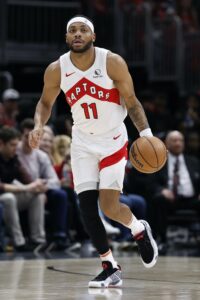 The salary limitations that apply to Non-Bird rights are more severe than those pertaining to Bird rights or Early Bird rights, so in many cases, the Non-Bird exception may not be enough to retain a well-regarded free agent. For instance, the Nuggets held Bruce Brown‘s Non-Bird rights last summer, but couldn’t have used them to match or exceed the offer the veteran wing received from the Pacers.
The salary limitations that apply to Non-Bird rights are more severe than those pertaining to Bird rights or Early Bird rights, so in many cases, the Non-Bird exception may not be enough to retain a well-regarded free agent. For instance, the Nuggets held Bruce Brown‘s Non-Bird rights last summer, but couldn’t have used them to match or exceed the offer the veteran wing received from the Pacers.
Because Brown had earned a relatively modest $6,479,000 salary in 2022/23, Denver’s ability to offer a raise using the Non-Bird exception was extremely limited — the Nuggets would have only been able to offer 120% of Brown’s previous salary using his Non-Bird rights, which worked out to $7,774,800. Indiana used its cap room to give Brown a $22MM starting salary, easily topping Denver’s maximum offer.
The Bucks may end up in a similar situation this offseason with Malik Beasley, who will only have Non-Bird rights after playing out a one-year, minimum-salary contract. Milwaukee almost certainly won’t have cap room, and the mid-level exception won’t be an option either as long as the team’s salary remains above the second tax apron. If they want to re-sign Beasley, the Bucks may have to hope he’ll accept an offer in the $3.6MM range via the Non-Bird exception.
Holding Non-Bird rights on a free agent didn’t help the Nuggets with Brown and may not be enough for the Bucks with Beasley, but there are cases in which the exception proves useful.
The Clippers, for instance, only had Non-Bird rights on Russell Westbrook last offseason, but that gave them the ability to offer a starting salary worth 20% more than the veteran’s minimum that another team might have offered. Since Westbrook wanted to remain in Los Angeles, the Non-Bird exception – which allowed for a starting salary of $3,835,738 – was enough to re-sign him. His minimum salary would have been $3,196,448.
After being traded from the Pacers to the Raptors earlier this season, Brown will have Non-Bird rights again this summer if Toronto opts to turn down his $23MM team option for 2024/25. However, in that scenario, the Raptors would have significantly more flexibility than Denver did to offer Brown a new contract, since he’ll be coming off a much higher salary this time around. Toronto could offer Brown a starting salary of up to $26.4MM (120% of $22MM) using the Non-Bird exception.
Finally, it’s worth noting that a player who re-signs with his previous team on a one-year deal (or a two-year deal that includes a second-year option) and will have Early Bird or Bird rights at the end of that contract would surrender those rights if he consents to a trade. In that scenario, he’d only finish the season with Non-Bird rights.
No players in this position consented to a trade this year, but it was a factor in Miles Bridges‘ decision to tell the Hornets he wouldn’t approve a deal.
If Charlotte had traded him to a new team, Bridges would have only had Non-Bird rights, meaning his new team wouldn’t have been able to offer him a starting salary higher than $9,505,560 (120% of his $7,921,300 salary for 2023/24) without using cap room or another exception. By remaining with the Hornets, Bridges hung onto his Bird rights, giving him more pathways to a significant payday, either by re-signing in Charlotte or via a sign-and-trade.
Note: This is a Hoops Rumors Glossary entry. Our glossary posts will explain specific rules relating to trades, free agency, or other aspects of the NBA’s Collective Bargaining Agreement. Larry Coon’s Salary Cap FAQ was used in the creation of this post.
Earlier versions of this post were published in previous years by Luke Adams and Chuck Myron.
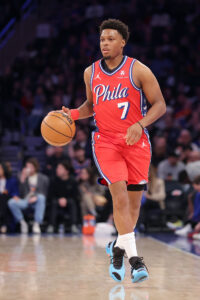
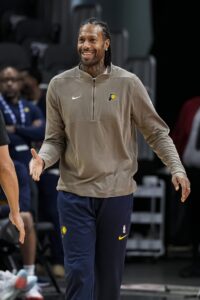 As is the case with Bird rights, a player’s clock stops when he’s released by a team and clears waivers, but it would pick up where it left off if he re-signs with that same team down the road without joining another club in the interim. For instance,
As is the case with Bird rights, a player’s clock stops when he’s released by a team and clears waivers, but it would pick up where it left off if he re-signs with that same team down the road without joining another club in the interim. For instance, 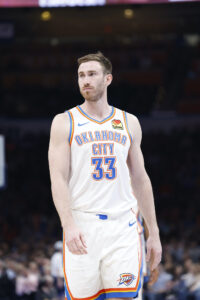 For instance, the Thunder will hold
For instance, the Thunder will hold 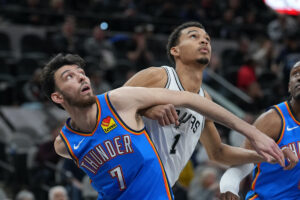 It was Wembanyama who got the upper hand in the latest chapter of the budding rivalry between the two young bigs on Thursday night. The No. 1 overall pick, who led the Spurs to an upset win over the Thunder, became the first player in NBA history to record at least 25 points, 10 rebounds, five assists, five blocks, and five 3-pointers in a game, according to
It was Wembanyama who got the upper hand in the latest chapter of the budding rivalry between the two young bigs on Thursday night. The No. 1 overall pick, who led the Spurs to an upset win over the Thunder, became the first player in NBA history to record at least 25 points, 10 rebounds, five assists, five blocks, and five 3-pointers in a game, according to